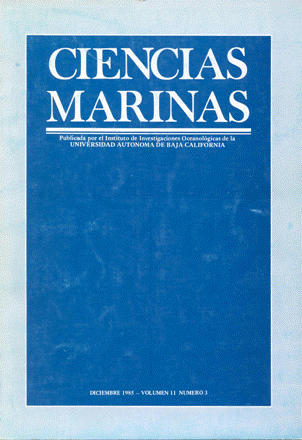The trace metal chemistry of a tropical hypersaline basin: Evidence from field and laboratory experiments
Main Article Content
Abstract
Field observations were made of the distribution of trace metals in water and sediments along a chlorinity gradient from 20-160‰ in the seasonally hypersaline Ceuta lagoon, Sinaloa, Mexico. The observations revealed a non-consecutive behaviour of the metals (with respect to chlorinity) with a rapid loss of metals to the sediments from chlorinity 20-50‰, a net desorption of metals from the sediments from 50-155‰ and finally, precipitation with halite or the last bitters. Radiochemical laboratoty experiments were performed to examine possible solid-solution formation of Ni, Co and Mn with the calcium carbonate and gypsum phases formed during seawater evaporation and the partition of Co and Mn between suspended sediments and seawater throughout the chlorinity range of the lagoon. From the laboratory experiments and a simple descriptive model of a hypersaline basin, it was concluded that the behaviour of trace metals in the lagoon results from variations in the adsorption/desorption equilibria with the sediments rather than solid solution formation.
Downloads
Article Details
This is an open access article distributed under a Creative Commons Attribution 4.0 License, which allows you to share and adapt the work, as long as you give appropriate credit to the original author(s) and the source, provide a link to the Creative Commons license, and indicate if changes were made. Figures, tables and other elements in the article are included in the article’s CC BY 4.0 license, unless otherwise indicated. The journal title is protected by copyrights and not subject to this license. Full license deed can be viewed here.

